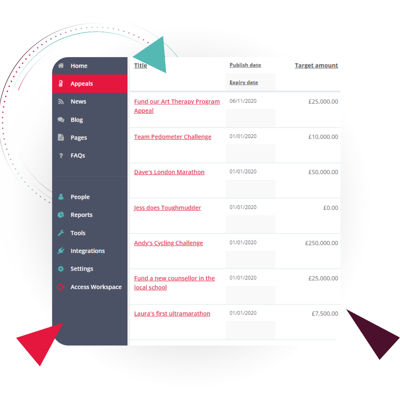 Donorfy
Donorfy
Six benefits of integrating your charity’s website with your CRM
The benefits of integrating your charity’s website with your CRM include greater control over your data and a smoother experience for your donors. When you’re organising events, keeping track of supporters and managing donations, a connected system makes it possible to stay on top of it all.

What does it mean for a charity to have an integrated CRM and website?
An integrated website and CRM is made up of two separate systems: the website with its content management system (ideally, a purpose-built charity website) and your organisation’s charity CRM. The website is public and intended to engage donors and potential donors. A CRM is where your donors’ data is stored, and can help with essential activities like fundraising, supporter engagement and gift aid processing.
As separate systems, there is no inherent connection between a website and a CRM, which means that data will need to be managed separately in each. Integrating the two systems allows them to share data. This makes it possible to see how website engagement translates into donations, memberships, event sales and more.
However, integrating a charity CRM and website requires planning. Integration is normally handled as part of a complete solution from one provider (which still consists of a separate website and CRM), like Access Evo for Charities, or enabled by APIs or a tool like Zapier, which can connect a website to thousands of other systems.
Top benefits of CRM and website integration for your charity
What to consider before integrating your charity’s website and CRM
Does your current website and CRM give you the functionality you need?
There are multiple ways to think about integrating your CRM with your website, but the first is to consider whether or not your current systems offer everything you need. If you are considering changing one or the other, it’s important to consider how any new system might impact your ability to integrate the two parts. We have written a complete guide to choosing a charity CRM if you want more advice on this subject.
Is a solution from a single provider right for you?
One integration option to consider is investing in a CRM and website from the same provider, which is the easiest way to ensure that the two systems can be integrated smoothly. This option only makes sense if you are considering changing one or the other, as you will either need to invest in both a new CRM and a new website from one company, or change one of them to match the provider of the other.
What options are there if I don’t want to change my existing software?
Without buying a new website CMS or CRM, your best option is to use APIs to connect the two systems. As we mentioned before, a tool like Zapier can make it possible for different software solutions to share data, but there may be other options available to you depending on your website’s CMS or the CRM you’re using. If you’re unsure what will work for your current systems, start by speaking to your website developers or your CRM provider to see what solutions they offer.
Next steps
Integrating your charity’s CRM with your website is a powerful way to get greater accuracy in your data and to provide a smoother experience for your donors. If you’re considering switching to new systems to implement integrated solutions from the ground up, consider our complete charity solution suite, Access Evo for Charities, or browse our other guides on types of CRM for different customer requirements and how much you should expect to pay for a Charity CRM.